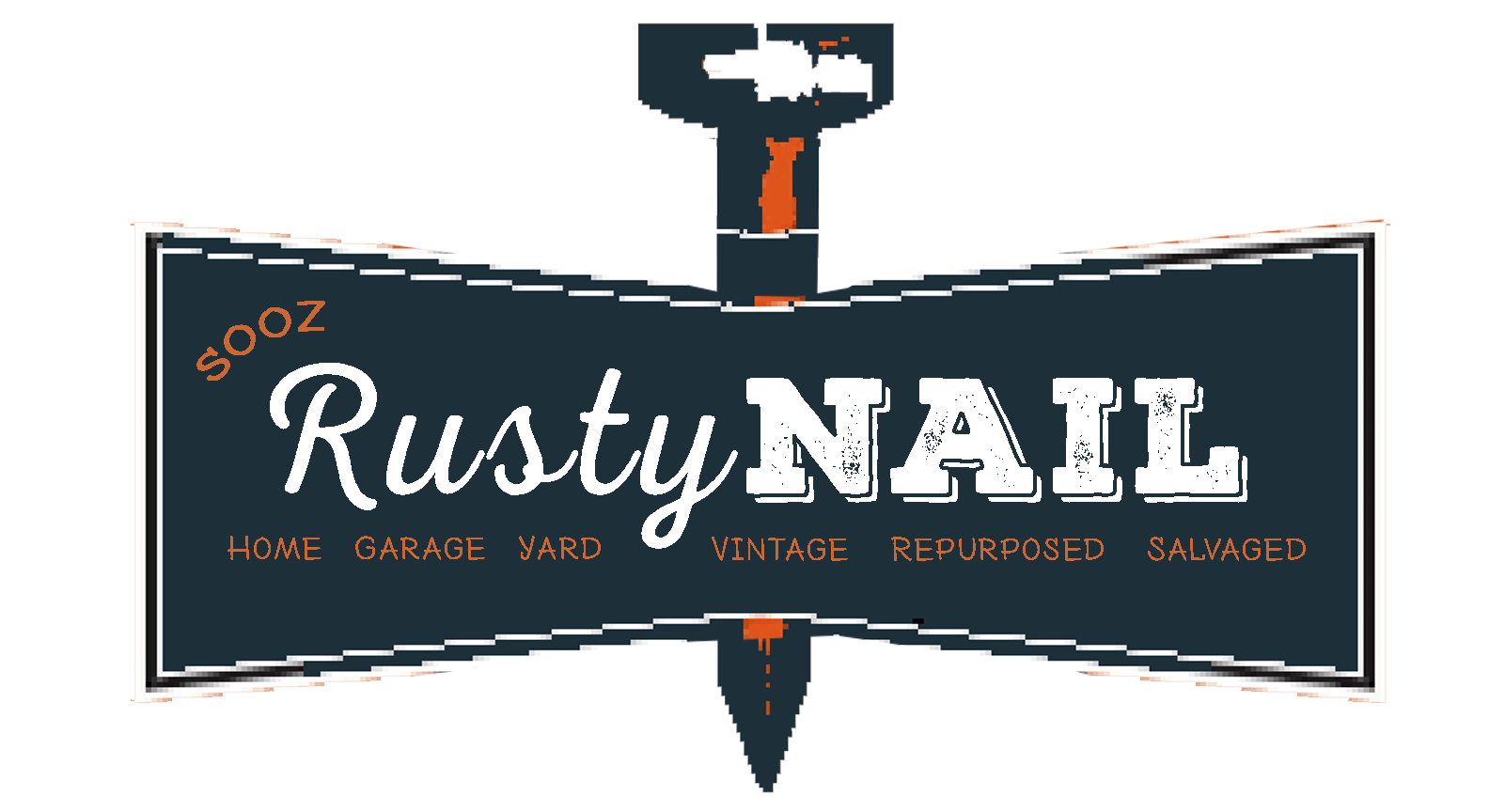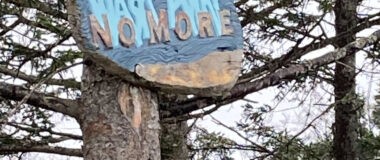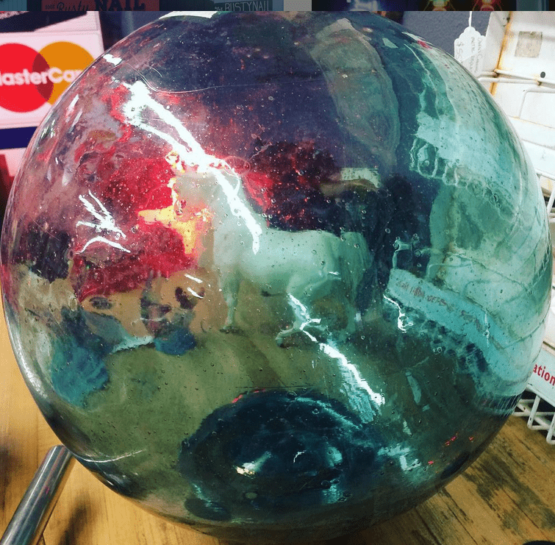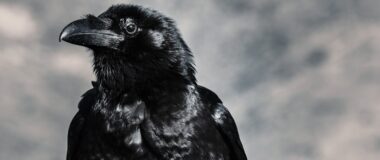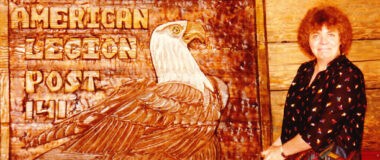Judy McVay began chainsaw carving in the 1960s
By 1969 Judy McVay was a twenty-something single mom to three young kids living in Humptulips (the heart of logging country) where it was difficult for women to find good jobs. With no help from her ex-husband, Judy’s brother Mike McVay a chainsaw artist since the late 50s, stepped in and taught her the basics as a means for her survival. A prolific artist since childhood, Judy took to carving like a fish to water and over the next 50-years carved some of the most iconic works in the Pacific Northwest, won competitions, and dominated in what was considered a sport suitable only to men.
Judy the Riveter — if you will.
In addition to pieces on display at our shop, Judy’s work — although it’s dwindling for those displayed outdoors — can still be seen “in the wild.” Many are publicly viewable along the Hidden Coast Scenic Byway. And once you get accustomed to her style, trust us, you’ll start seeing her in all kinds of other places because her work can be found in and around Spokane, Seattle, Whidbey Island, Forks, Puyallup and other Washington locations plus Alaska, Oklahoma, and as far away as Japan. All of which have stories we intend to share.
MISSION:
To preserve and promote Judy McVay’s significant contribution to an art form that she helped pioneer while educating curious folks about chainsaw carving and it’s deep roots in Pacific Northwest forests.
The Judy McVay Museum Project — a labor of love
The Judy McVay Museum Project started with a sign found buried in an attic at Copalis Beach. It sent us on a wild goose chase to figure out who carved it and once we knew — why Judy’s story hasn’t been told. We were hooked from the get-go and along the way many folks added details including Judy herself.
We began with little wins. First a recognition ceremony at the Welcome to Ocean Shores sign carved by Judy in 2000. A plaque now sits nearby so those taking pictures know who she is. (yay!) Then we interviewed the family and created a website for them that includes the history of chainsaw carving. Next we’re creating a physical space for people to view some of her work — including a very special totem pole.
In 1981 two historical events happened in the world of chainsaw sculpting. First, Judy and family helped create the first chainsaw carving competition the world had ever seen, held at the Puyallup Fair. And secondly, Judy McVay participated and placed fourth in that competition making her the first woman in the world to both compete in and place at a chainsaw carving competition. Woot! The following year (1982) Judy competed and placed again.
The totem pole pictured is Judy’s 1982 winning piece.
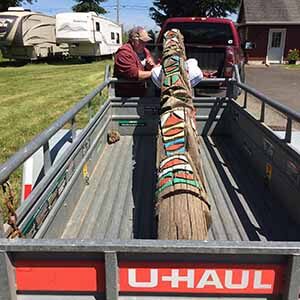
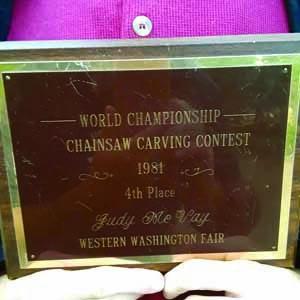
But that’s not all. As far as we know, it’s the sole surviving pole of fifteen carved and surrendered to the Puyallup fairgrounds. Over the first three years of competition (1981-1983) contestants were required to carve totem poles (that’s another story!) and the top five (fifteen in all) were retained by the Fair for display. They stood sentinel on the grounds until renovations, acts of God, or vandalism caused them to be moved to the back-forty — slated for destruction.
If it weren’t for Bret Bosley who started working maintenance at the Fairgrounds in 1981, all fifteen poles would be gone. Instead, as Bret tells it “By 1999 I’d spent years watching the poles disappear one-by-one. And when it came to the last pole, I talked my boss into selling it to me for $20 bucks. I just couldn’t stand the idea of it being lost.” Bret took Judy’s pole to the RV park he owns on River Rd and cared for it until 2020 when he generously donated it to this project. (Big thank-you, Bret!)
The pole will be on public display at the shop this summer (2021). If you’d like to be updated, sign-up for our bi-monthly-ish newsletter (form in footer) or follow us on social: IG or FB.
Judy McVay on display at Sooz Rusty Nail (or coming soon)
Custom Stage Coach
COMING SOON!
Copalis Beach Automotive
COMING SOON!
1982 Championship Totem Pole
Ocean Automotive
Neil's Clover Patch
Screamin' Eagle Campground
COMING SOON!
Green Lantern Vendor Village
COMING SOON!
Hogans Corner
The more you know, the more you'll love her!
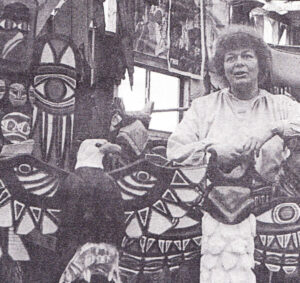
The Judy McVay Legacy: Carve or Starve
Finding Judy along the Hidden Coast Scenic Byway Chances are, if you’ve visited the Seattle Aquarium, taken an Alaskan cruise, bought a carving from the
